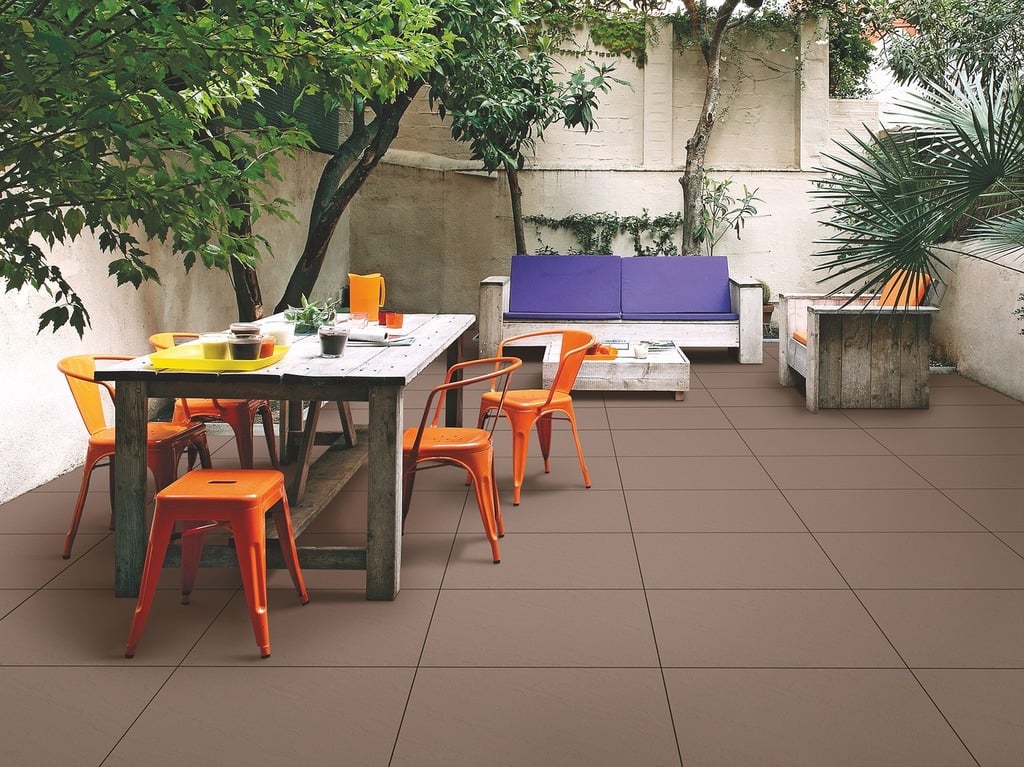Transform your outdoor space into a stunning sanctuary with the perfect outdoor floor tiles – discover the secrets professionals don’t want you to know.
When it comes to creating an outdoor living space that’s both beautiful and durable, choosing the right floor tiles is absolutely crucial. At Bromley Tilers, we’ve seen countless outdoor projects, and we know that the difference between a stunning, long-lasting installation and a disappointing one often comes down to making informed choices at the selection stage.
Understanding Outdoor Tile Materials: Making the Right Choice
The foundation of any successful outdoor tiling project lies in selecting the appropriate material. While the market offers numerous options, not all tiles are created equal when it comes to outdoor applications. According to recent industry data, porcelain tiles account for over 65% of outdoor tiling installations in the UK, followed by natural stone at 25% and other materials making up the remainder.
Porcelain Tiles: The Modern Marvel
Porcelain tiles have revolutionised outdoor flooring solutions, offering unparalleled durability and versatility. These tiles are manufactured at extremely high temperatures, resulting in a dense, non-porous material that’s perfect for the British climate. Key advantages include:
- Exceptional frost resistance with absorption rates below 0.5%
- Superior strength with breaking strengths exceeding 1300N
- UV resistance preventing colour fading
- Minimal maintenance requirements
- Vast range of styles, including wood and stone effects
Natural Stone: Timeless Beauty
Natural stone tiles bring unique character and timeless appeal to outdoor spaces. Each type offers distinct characteristics:
- Granite: Extremely hard-wearing and resistant to scratches
- Slate: Natural slip resistance and distinctive textures
- Travertine: Classic Mediterranean appeal with natural cooling properties
- Limestone: Elegant appearance but requires regular sealing
Essential Features for Long-Lasting Outdoor Tiles
The success of outdoor tiling projects hinges on selecting products with specific technical characteristics. Recent studies show that 80% of outdoor tile failures are due to inappropriate material selection rather than installation issues. When choosing outdoor floor tiles, several critical features demand attention.
Weather Resistance and Frost Protection
In the UK’s variable climate, weather resistance is non-negotiable. Look for tiles with:
- Frost resistance certification to EN 202 standards
- Water absorption rate below 3%
- Temperature cycling resistance
- Salt spray resistance for coastal areas
Slip Resistance and Safety
Safety should never be compromised when selecting outdoor tiles. The UK’s Health and Safety Executive recommends a minimum R11 slip resistance rating for outdoor areas. Consider these factors:
- R-ratings (R11 or R12 for outdoor use)
- Pendulum Test Value (PTV) of 36+ for wet conditions
- Surface texture appropriate for intended use
- Additional grip for sloped areas
Design Considerations for Outdoor Spaces
Creating an outdoor space that remains beautiful for years requires careful consideration of both aesthetic and practical elements. Current trends show that 70% of homeowners prefer larger format tiles for outdoor spaces, with textured finishes gaining popularity for their practical benefits and contemporary appeal.
Colour and Pattern Selection
The right colour and pattern choices can dramatically impact your outdoor space’s longevity and appearance. Consider these factors:
- Light colours reflect heat but show dirt more easily
- Dark colours absorb heat but hide dirt better
- Natural tones blend well with outdoor environments
- Patterns can help disguise dirt and wear
Size and Layout Options
The size and layout of your tiles can significantly impact both aesthetics and functionality. Modern outdoor spaces benefit from:
- Large format tiles (60x60cm or larger) for contemporary looks
- Mixed-size patterns for visual interest
- Directional layouts to guide foot traffic
- Proper spacing for drainage considerations
Professional Installation Tips for Longevity
Even the highest quality tiles can fail if not installed correctly. Industry statistics indicate that proper installation can extend tile life by up to 50%. Professional installation ensures your outdoor tiles will stand the test of time.
Substrate Preparation
A successful outdoor tile installation starts with proper substrate preparation. Essential steps include:
- Ensuring adequate drainage slope (minimum 1:80)
- Installing appropriate waterproofing membranes
- Using the correct adhesive for outdoor conditions
- Incorporating movement joints every 4-5 metres
Maintenance Requirements
Regular maintenance is crucial for preserving the beauty and functionality of outdoor tiles. Establish a maintenance routine that includes:
- Regular cleaning with appropriate products
- Annual deep cleaning and inspection
- Prompt repair of any damaged tiles or grout
- Resealing when required (for natural stone)
Making Your Final Selection
When making your final decision, consider both immediate and long-term factors. Research shows that investing in higher quality outdoor tiles can reduce replacement costs by up to 60% over a 10-year period.
Budget Considerations
While initial costs are important, focus on long-term value. Factor in:
- Installation costs (typically 40-60% of total project cost)
- Maintenance requirements and associated costs
- Expected lifespan of different materials
- Warranty terms and conditions
Professional Consultation
Working with experienced professionals like Bromley Tilers ensures you get expert guidance throughout your project. We can help you:
- Evaluate suitable materials for your specific needs
- Consider technical requirements and limitations
- Plan for proper installation techniques
- Ensure compliance with local building regulations
By carefully considering all these factors and working with experienced professionals, you can select outdoor floor tiles that will truly stand the test of time. Remember, the right choice of tiles, combined with proper installation and maintenance, will create an outdoor space that remains beautiful and functional for years to come.
FAQ
Which type of tile is not recommended for outdoor use?
Ceramic tiles are simply not frost proof and therefore if laid outside will ‘pop’ or crack in cold weather. There is too much moisture left in the tile during the manufacturing process meaning its density is much lower than that of porcelain leaving room for moisture to expand when it freezes.
What is the problem with porcelain paving?
Disadvantages of porcelain paving slabs Due to the hard, dense nature of Porcelain paving, they tend to be quite brittle, much like the natural stone they are mimicking. This means that if your paving hasn’t been properly supported and laid it can crack under pressure.
What’s cheaper, pavers or tiles?
Cheap. While the pavers themselves may be somewhat more expensive than tiles, the simple process of laying pavers makes it cheaper than to install a concrete slab and then to lay tiles over it.
What do you put under outdoor tiles?
It’s recommended that the substrate for exterior tiles is a concrete or cement sand screed with a minimum thickness of 50mm. You must ensure that the substrate is able to support the chosen finish and any static or dynamic loads applied (this could be a garden shed or a driveway for example).
Sources
[1] https://www.countryfloors.com/product-category/outdoor-tiles-pavers/
[2] https://www.flooranddecor.com/explore-outdoors
[3] https://www.stonetiledepot.com/tile/outdoor-tiles/



